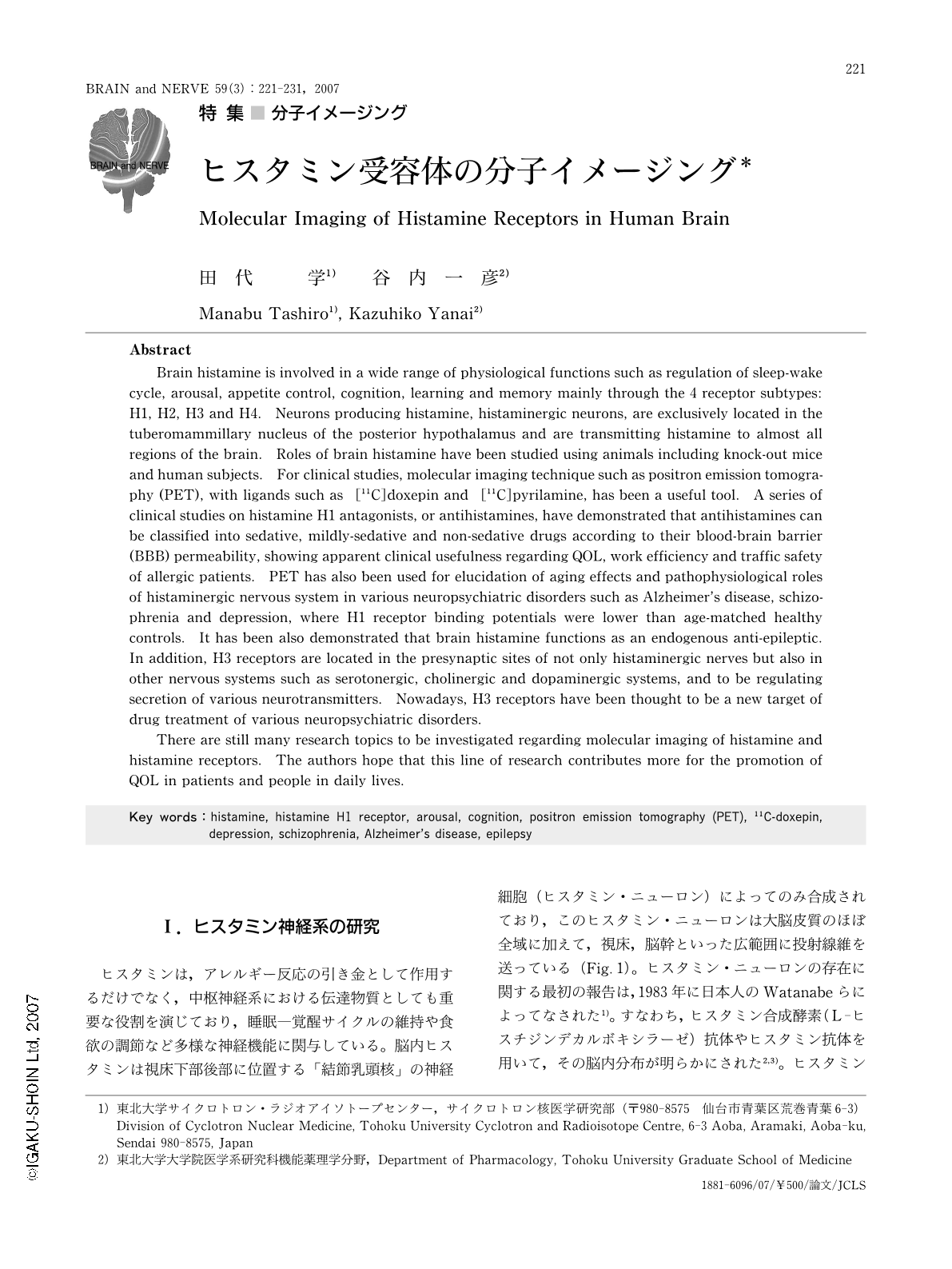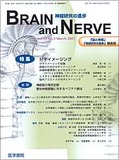Japanese
English
- 有料閲覧
- Abstract 文献概要
- 1ページ目 Look Inside
- 参考文献 Reference
I.ヒスタミン神経系の研究
ヒスタミンは,アレルギー反応の引き金として作用するだけでなく,中枢神経系における伝達物質としても重要な役割を演じており,睡眠―覚醒サイクルの維持や食欲の調節など多様な神経機能に関与している。脳内ヒスタミンは視床下部後部に位置する「結節乳頭核」の神経細胞(ヒスタミン・ニューロン)によってのみ合成されており,このヒスタミン・ニューロンは大脳皮質のほぼ全域に加えて,視床,脳幹といった広範囲に投射線維を送っている(Fig.1)。ヒスタミン・ニューロンの存在に関する最初の報告は,1983年に日本人のWatanabeらによってなされた1)。すなわち,ヒスタミン合成酵素(L-ヒスチジンデカルボキシラーゼ)抗体やヒスタミン抗体を用いて,その脳内分布が明らかにされた2,3)。ヒスタミン作動性神経(ヒスタミン神経)は,4種類のヒスタミン受容体サブタイプ(H1,H2,H3,H4)を介して情報伝達を行っている。H1受容体は,睡眠―覚醒サイクルの調節,食欲の調節,ストレス反応,てんかん発作の抑制作用,そして学習・記憶,感情などといった多様な脳機能に関与している4,5)。H2受容体は胃酸分泌の調節にあたるほか,脳内ではH1受容体に類似した機能に関与していると考えられている。H3受容体はシナプス前膜上の自己受容体として発見されており,脳内ヒスタミンの合成・放出の調節に関与していることが明らかにされた5)。
Abstract
Brain histamine is involved in a wide range of physiological functions such as regulation of sleep-wake cycle, arousal, appetite control, cognition, learning and memory mainly through the 4 receptor subtypes: H1, H2, H3 and H4. Neurons producing histamine, histaminergic neurons, are exclusively located in the tuberomammillary nucleus of the posterior hypothalamus and are transmitting histamine to almost all regions of the brain. Roles of brain histamine have been studied using animals including knock-out mice and human subjects. For clinical studies,molecular imaging technique such as positron emission tomography (PET), with ligands such as [11C]doxepin and [11C]pyrilamine, has been a useful tool. A series of clinical studies on histamine H1 antagonists, or antihistamines, have demonstrated that antihistamines can be classified into sedative, mildly-sedative and non-sedative drugs according to their blood-brain barrier (BBB)permeability, showing apparent clinical usefulness regarding QOL,work efficiency and traffic safety of allergic patients. PET has also been used for elucidation of aging effects and pathophysiological roles of histaminergic nervous system in various neuropsychiatric disorders such as Alzheimer's disease, schizophrenia and depression, where H1 receptor binding potentials were lower than age-matched healthy controls. It has been also demonstrated that brain histamine functions as an endogenous anti-epileptic. In addition, H3 receptors are located in the presynaptic sites of not only histaminergic nerves but also in other nervous systems such as serotonergic, cholinergic and dopaminergic systems, and to be regulating secretion of various neurotransmitters. Nowadays, H3 receptors have been thought to be a new target of drug treatment of various neuropsychiatric disorders.
There are still many research topics to be investigated regarding molecular imaging of histamine and histamine receptors. The authors hope that this line of research contributes more for the promotion of QOL in patients and people in daily lives.

Copyright © 2007, Igaku-Shoin Ltd. All rights reserved.


